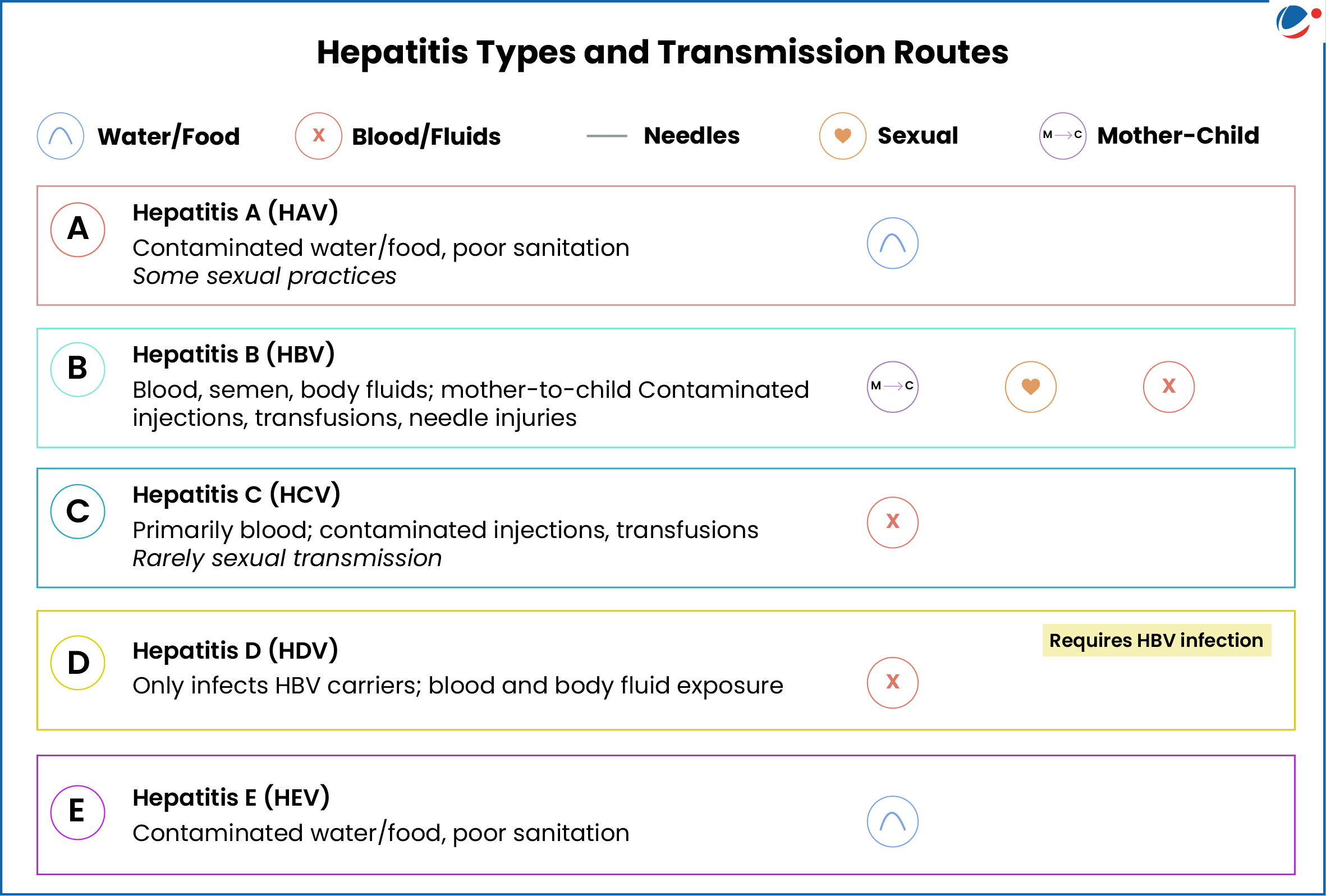Hepatitis D is an incompetent virus that requires hepatitis B virus (HBV) for replication.
- This means hepatitis D only affects people who already have hepatitis B either simultaneously or sequentially.
About Hepatitis Virus

- Viral hepatitis (types A, B, C, D, and E) are major causes of acute liver infection.
- However, only hepatitis B, C, and D can lead to chronic infections with a higher risk of liver cirrhosis, failure or cancer.
- Hepatocellular carcinoma is one of the top 10 cancers globally.
- Vaccine Availability
- There is no vaccine for Hepatitis C virus.
- Hepatitis B vaccines provides protection from HDV infection.
- Global Impact
- Hepatitis types B, C, and D affect over 300 million people worldwide and cause 1.3 million deaths.
- Most people with these infections remain undiagnosed.
- Key Initiatives
- India: National Viral Hepatitis Control Program (2018) aims to eliminate Hepatitis C by 2030 and reduce deaths from other types, in line with SDG 3.3.
- Global: WHO’s Global Health Sector Strategy on HIV, Viral Hepatitis and Sexually Transmitted Infections (2022–2030) aims to eliminate viral hepatitis as a public health problem.
Key Challenges in Tackling Hepatitis
- Low Diagnosis: Only 13% of Hepatitis B and 36% of Hepatitis C cases were diagnosed in 2022.
- Poor Vaccine Coverage: In India, despite being in the immunisation program, Hepatitis B vaccine coverage is just 50%.
- Limited Treatment: Few approved therapies, though new drugs like bulevirtide offer hope.




